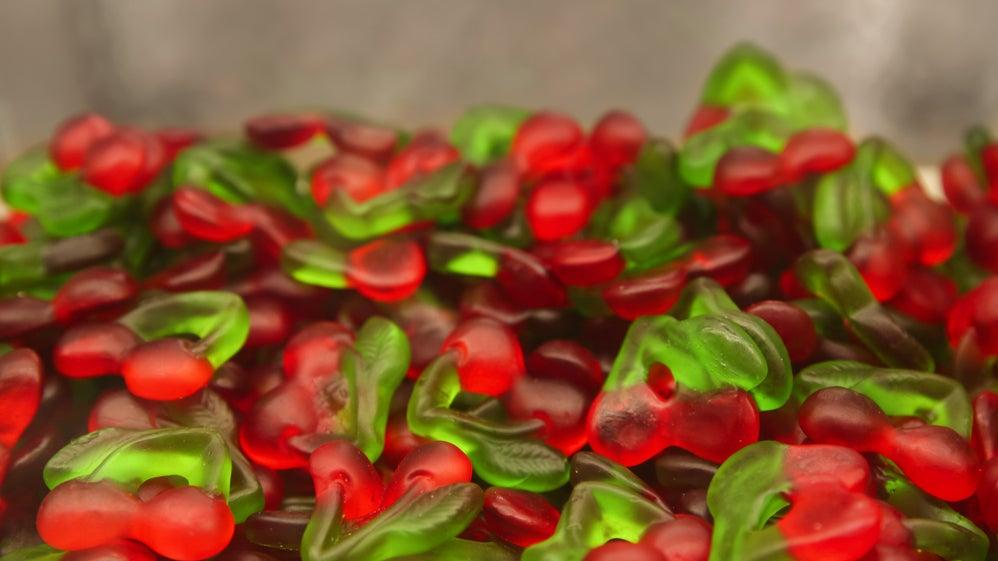Cherry-Flavored Candy Is About To Taste Even Better
A team of researchers have figured out how to harness a more authentic and delicious cherry flavor from plants.
I'm one of those sickos who enjoys the taste of artificial cherry flavoring. I could subsist entirely on Laffy Taffy Sparkle Cherry if necessary. Don't tell my coworkers, but a handful of cherry Jolly Ranchers is enough to shut me up for 10 to 15 minutes, even when I'm at my chattiest. (I am often chatty.) Still, a lot of folks take issue with artificial cherry due to its faintly medicinal flavor. Now, scientists at Purdue University have enlisted one surprising soldier to improve the taste of artificial cherry: the petunia flower.
Researchers have been trying to capture authentic cherry flavor for decades. Now, according to a press release sent to The Takeout, the Purdue team thinks they've cracked the code. The researchers published their work in Nature Communications, outlining the ways they identified the "molecular recipe" for one of the key compounds in that authentic cherry flavor: benzaldehyde.
What gives cherry its flavor?
We've written about this compound before; it exists in cherry pits and stems, and it's also found in almond oil. Per the Purdue release, benzaldehyde is "key to some of the most popular flavors including cherry, almond and raspberry." The researchers point out that it's "second only to vanillin in terms of economic value to the food industry." Now, the Perdue researchers think they've figured out how to replicate it in a lab setting.
Purdue team lead Natalia Dudareva points out that in order to duplicate the cherry flavor biochemists have to track down the "molecular recipe," otherwise known as a biosynthetic pathway, for benzaldehyde. Only then can researchers "bottle" the flavor for use in other applications.
The link between petunia flowers and cherry flavoring
So, how did the Purdue team figure out benzaldehyde's "molecular recipe"? Per the release, Dudareva and her team studied the scent of petunia flowers to figure it out.
"Benzaldehyde attracts pollinators and, in addition to [fruits like cherries], it is found in other plants, including petunias," Dudareva said. By carefully analyzing the petunia flowers, the researchers were able to denote the gene sequence necessary to create that signature benzaldehyde flavor. Now, they'll likely transfer that pathway to yeast or other microbes. That way, they can incorporate it into the "fermentation process widely used in food and beverage production," the release explains.
It seems like a lot of work to produce cherry candy that tastes slightly less like Ricola, I know. But if this means that more of the world gets to experience the delights of a cherry sno-cone, I'd say it's worth it.
